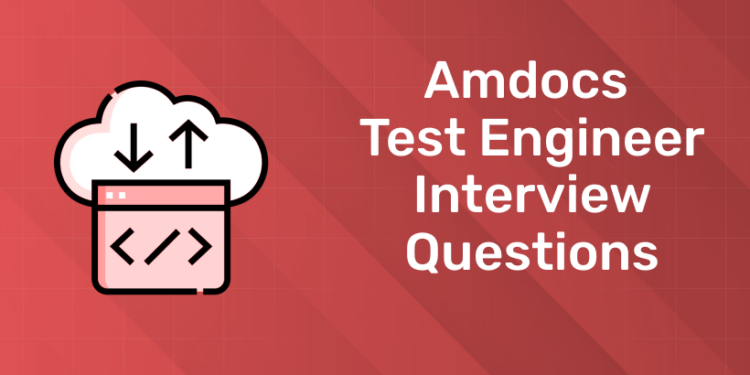Table of Contents
Breaking into a data analyst role at Amazon is a dream for many professionals. Known for its data-driven culture, Amazon seeks candidates with exceptional analytical skills, problem-solving abilities, and technical expertise. Preparing for an Amazon data analyst interview requires a strategic approach, as the questions often test your understanding of data analytics, business acumen, and technical proficiency. In this blog, we’ll explore commonly asked Amazon data analyst interview questions, tips for preparation, and the key competencies Amazon values in candidates.
Learn Software Testing from QA Experts! Get Free Demo Classes Here!
Amazon Data Analyst Interview Questions and Answers
Landing a data analyst role at Amazon requires thorough preparation. Here’s a breakdown of some commonly asked interview questions and how to approach answering them effectively:
SQL Questions
Amazon heavily relies on SQL for data extraction and manipulation. Expect questions like:
Q: Write a query to find the top 3 products with the highest sales in a given month.
SELECT product_id, SUM(sales) AS total_sales
FROM sales_data
WHERE MONTH(sale_date) = ‘2025-01’
GROUP BY product_id
ORDER BY total_sales DESC
LIMIT 3;
This tests your ability to work with aggregation, filtering, and sorting in SQL.
Data Analysis and Problem-Solving
These questions evaluate your ability to interpret data and provide actionable insights.
Q: How would you handle missing or incomplete data in a dataset?
- Identify the extent of missing data using tools like Python or Excel.
- For small missing data points, use techniques like mean/mode/median imputation.
- For large gaps, analyze trends or seek input from domain experts.
- If appropriate, exclude rows or columns where missing data compromises the analysis.
Behavioral Questions
Amazon’s interviews often focus on leadership principles.
Q: Tell me about a time when you used data to influence a business decision.
Use the STAR method (Situation, Task, Action, Result).
Example: “In my previous role, I noticed a decline in customer retention. I analyzed transaction data and identified trends indicating a pricing issue. By recommending a discount strategy, we improved retention by 15% over three months.”
Statistics and Metrics
Understanding metrics and statistical concepts is critical.
Q: What is the difference between correlation and causation?
Correlation: A statistical relationship between two variables (e.g., sales and weather).
Causation: When one variable directly affects another.
Example: Ice cream sales and pool usage are correlated, but increased temperature causes both.
Technical and Tool-Based Questions
You might be tested on tools like Excel, Python, or Tableau.
How would you visualize sales trends over time?
Use tools like Tableau or Excel to create line charts for continuous data.
Highlight key patterns, such as seasonal spikes or consistent growth, and ensure clear labels and legends.
Business-Specific Scenarios
These assess your understanding of Amazon’s operations.
Q: How would you identify the root cause of declining sales in a specific region?
Analyze sales data segmented by region.
Compare against historical performance and external factors (e.g., market trends, competitors).
Dive into customer feedback and logistical reports for deeper insights.
Interview Preparation Tips
1: What is software testing?
Understand Amazon’s Leadership Principles
Amazon’s interviews often include questions tied to its 14 Leadership Principles, such as “Customer Obsession,” “Dive Deep,” and “Bias for Action.”
Tip: Familiarize yourself with these principles and align your responses to demonstrate how your past experiences reflect them.
Sharpen Your Technical Skills
Amazon expects strong proficiency in technical tools and concepts, especially SQL, Excel, and data visualization tools like Tableau.
SQL: Practice advanced queries, joins, window functions, and optimization techniques.
Excel: Be comfortable with pivot tables, VLOOKUP, and data analysis functions.
Visualization: Practice creating clear, impactful visuals and explaining insights.
Use the STAR Method for Behavioral Questions
Behavioral questions are a big part of Amazon interviews. Structure your answers using the STAR method:
Situation: Set the context.
Task: Explain your responsibility.
Action: Describe what you did.
Result: Share the outcome with metrics if possible.
Tip: Have 3-5 solid stories prepared that showcase leadership, problem-solving, and innovation.
Brush up on Statistics
Review concepts like regression, hypothesis testing, and probability.
Prepare for Case Studies
Amazon may present hypothetical business scenarios where you must analyze data and provide recommendations.
Practice solving problems like analyzing declining sales, optimizing delivery routes, or improving customer retention.
Practice Mock Interviews
Mock interviews can help you prepare for both technical and behavioral questions.
Tip: Use platforms like Pramp or Interviewing.io to simulate interviews with peers or mentors.
Study Amazon’s Business
Understand Amazon’s key products, services, and market strategies.
Research areas like AWS, Prime, logistics, and how data plays a role in driving decisions.
Tip: Stay updated on recent Amazon news or initiatives.
Conclusion
Preparing for an Amazon data analyst interview can be challenging but highly rewarding. By sharpening your SQL, statistics, and data visualization skills, practicing behavioral questions using the STAR method, and familiarizing yourself with Amazon’s business model, you can stand out as a well-prepared and confident candidate. Approach the process with diligence and confidence, and you’ll be one step closer to joining one of the most data-driven organizations in the world. Good luck!
Learn Software Testing from QA Experts! Get Free Demo Classes Here!












